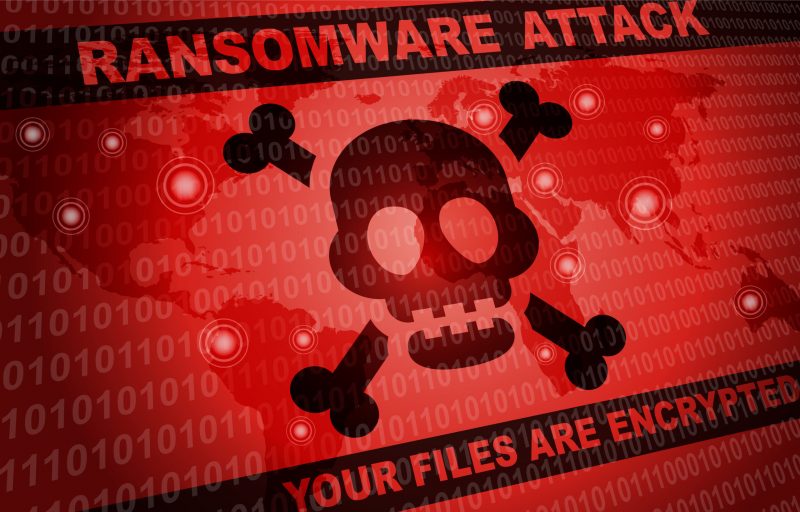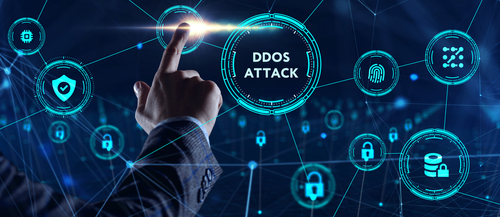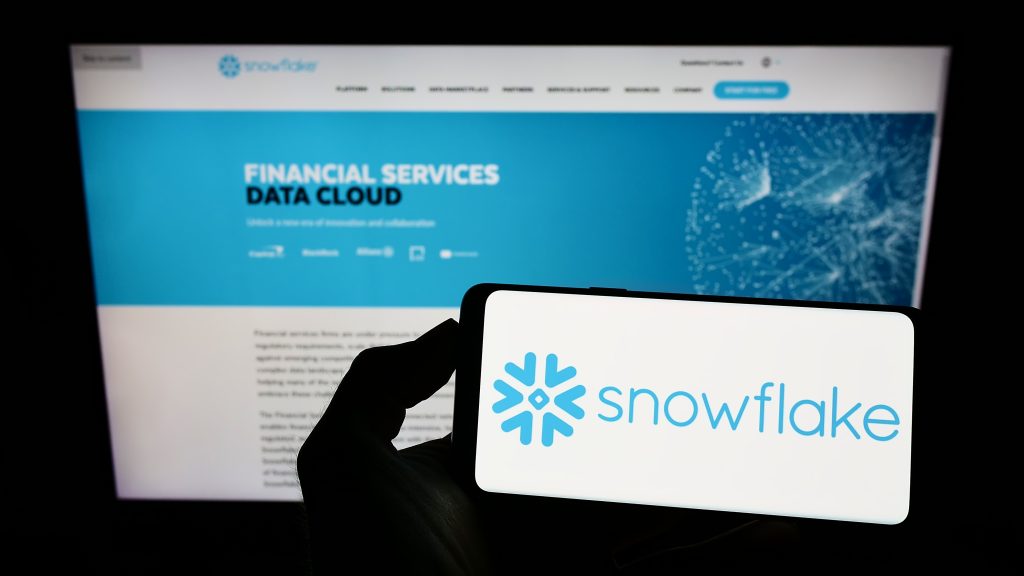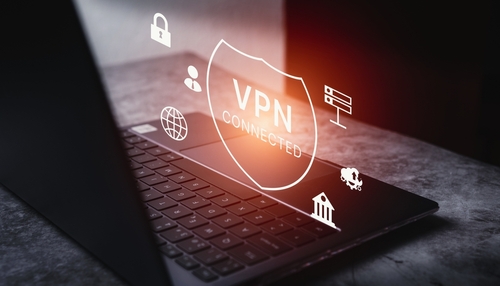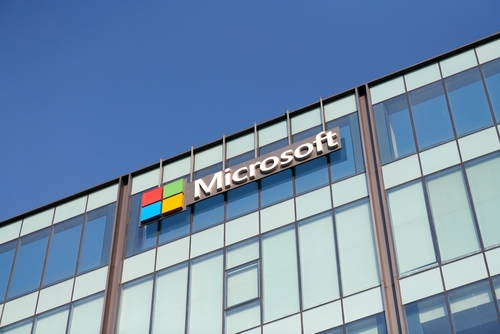The Top 2024 Cyber Incidents: Lessons Learned and Key Cyber Strategies for 2025
By Rey LeClerc Sveinsson, PhD
(Editor’s Note: The year 2024 witnessed some of the most significant and disruptive cyber incidents in recent history. In this article, ERMProtect’s cyber expert Dr. Rey LeClerc Sveinsson delves into the top cyber incidents of 2024, analyzes the lessons learned, and explores actionable strategies to fortify cybersecurity in 2025.)
1. CrowdStrike Software Update Outage
Incident Overview:
In early 2024, CrowdStrike, a leading cybersecurity provider, faced a significant incident stemming from a faulty and incompatible software update. The update, intended to improve system functionality and security, inadvertently caused widespread system crashes across multiple client networks.
The underlying issue was a compatibility problem between the update and existing system configurations, which had not been adequately identified during pre-release testing. As organizations worldwide depend on CrowdStrike for robust cybersecurity solutions, the outage had a ripple effect, temporarily disrupting operations and leaving systems vulnerable to potential cyber threats.
The incident underscored the critical need for comprehensive testing protocols and quality assurance measures in software deployment processes. It also highlighted the risks associated with relying heavily on a single vendor, as the failure impacted a large customer base simultaneously, illustrating the importance of diversification in cybersecurity solutions.
Root Cause:
Inadequate testing protocols for software updates.
Lessons Learned from CrowdStrike Incident:
- Thorough Testing of Updates
Ensure rigorous testing before deploying software updates to prevent compatibility issues. This process should include both functional and non-functional testing to verify that the update achieves its intended objectives without introducing new vulnerabilities or disruptions. Functional testing ensures the update works as designed, while non-functional testing evaluates its stability, performance, and compatibility with existing systems.
Organizations should also adopt staged deployment strategies. By releasing updates incrementally — first to a controlled group of users or systems — the organization can identify and resolve potential issues before the update is rolled out widely.
To further enhance reliability, organizations should conduct testing in an environment that closely mirrors the production system. Simulating real-world conditions ensures that any potential conflicts are identified and addressed proactively.
- Diversification of Security Providers
Avoid over-reliance on a single vendor to mitigate the risks of vendor-specific failures. While partnering with a trusted vendor offers numerous advantages, placing all cybersecurity efforts in the hands of one provider can create a single point of failure.
This strategy involves leveraging a mix of security solutions from different providers to address various aspects of the organization’s needs, such as endpoint protection, cloud security, identity and access management, and incident response. By adopting a multi-vendor approach, organizations benefit from a broader range of expertise, specialized tools, and innovative technologies tailored to different threat scenarios.
Diversification also promotes resilience. For instance, if a vendor-specific update causes issues or downtime, alternative systems from other providers can maintain critical security functions, minimizing disruption. Additionally, working with multiple vendors enhances the organization’s ability to adopt best-of-breed solutions, selecting the most effective tools for specific requirements rather than relying on a one-size-fits-all approach.
By diversifying security providers, organizations can build a layered and robust defense system, improve their adaptability to emerging threats, and mitigate the potential impact of vendor-specific failures, ultimately strengthening their overall cybersecurity resilience.
2. Ransomware Attack on UnitedHealth Group
Incident Overview:
This attack exploited unpatched vulnerabilities and a lack of multi-factor authentication (MFA), resulting in billions of dollars in damages. Threat actors exploited unpatched vulnerabilities in the company’s systems, using these weak points as entryways to deploy ransomware. Once inside, the attackers leveraged the absence of multi-factor authentication (MFA) on critical accounts to escalate their access and encrypt vast amounts of sensitive data.
The lack of robust security protocols allowed the attack to unfold swiftly, leaving the organization with limited options for containment or mitigation. The fallout was catastrophic, with billions of dollars in damages, including operational disruptions, ransom payments, recovery costs, and reputational harm.
The incident highlighted the critical role of proactive cybersecurity measures such as regular patch management and the implementation of MFA. These safeguards, if in place, could have significantly reduced the likelihood or impact of the attack. For an industry giant like UnitedHealth Group, the event served as a stark reminder of the devastating consequences of underestimating basic cybersecurity hygiene.
Root Cause:
Unaddressed vulnerabilities and insufficient authentication measures.
Lessons Learned from UnitedHealth Group Attack:
- Proactive Patch Management
Implementing a robust patch management program is essential to minimize vulnerabilities. Organizations must regularly assess their IT infrastructure to identify outdated software or systems and prioritize applying security patches based on the severity of vulnerabilities. Automated patch management tools can ensure timely updates, reducing the window of exposure for potential attacks.
A clear patch management policy should be established, requiring critical vulnerabilities to be addressed within defined timeframes. Regular audits and testing should be conducted to verify that patches are applied effectively across all systems.
- Multi-Factor Authentication (MFA) Implementation
Enforce MFA for all accounts, particularly administrative and privileged ones, to add an additional layer of security. MFA combines multiple verification methods, such as passwords, biometrics, or hardware tokens, significantly reducing the likelihood of unauthorized access even if credentials are compromised. Organizations should implement strong MFA solutions across all endpoints, remote access systems, and cloud-based platforms, ensuring seamless integration with existing infrastructure.
- Access Control and Privilege Management
Enforce the principle of least privilege (POLP) to limit user access to only what is necessary for their roles. Regularly review user access rights to detect and remove excessive or outdated permissions, reducing the risk of lateral movement during an attack. Privileged access management (PAM) tools should be deployed to secure, monitor, and control access to critical systems and accounts.
- Continuous Threat Monitoring and Vulnerability Scanning
Adopt endpoint detection and response (EDR) solutions to monitor unusual activity and detect vulnerabilities in real time. Continuous vulnerability scanning ensures that potential weaknesses are identified and addressed before they can be exploited. Collaborating with threat intelligence providers allows organizations to stay ahead of emerging threats and adjust their security measures accordingly.
- Enhanced Incident Response Capabilities
Develop and regularly update an incident response plan (IRP) to ensure rapid detection, containment, and recovery from ransomware attacks. Conduct tabletop exercises and simulations to test the organization’s readiness, identify gaps, and improve response strategies. A well-defined IRP minimizes downtime and reduces the overall impact of a cybersecurity incident.
- Employee Awareness and Training
Educate employees on recognizing common attack vectors like phishing emails and suspicious links, as human error remains a major cause of breaches. Regularly update training programs to reflect evolving threats and ensure employees are aware of the best practices, such as creating strong passwords and avoiding insecure behaviors. Reinforcing a culture of cybersecurity awareness strengthens the organization's overall defenses.
- Network Segmentation and Backup Strategy
Segment the network to restrict lateral movement and limit the scope of potential damage during an attack. Implement robust backup procedures with offline encrypted backups to ensure data recovery in case of ransomware incidents. Regularly test backup systems to confirm their reliability and effectiveness.
3. Data Breach at The Billericay School
Incident Overview:
The breach occurred when attackers exploited poorly managed access privileges, gaining unauthorized entry to systems housing confidential student and staff data. Compounding the issue, the school lacked effective data minimization practices, resulting in the unnecessary retention of information that could have otherwise been safely purged.
This incident highlighted systemic shortcomings in how access permissions were assigned and monitored, leaving critical data exposed to potential misuse. Moreover, insufficient encryption and data security protocols allowed attackers to extract information without triggering immediate alarms.
The fallout not only jeopardized the privacy of those affected but also raised broader questions about the institution’s compliance with data protection regulations, such as the GDPR. For educational institutions, the breach served as a wake-up call to prioritize comprehensive access control strategies and data protection frameworks to safeguard personal information from evolving cyber threats.
Root Cause:
Weak access controls and lack of data minimization practices.
Lessons Learned from The Billericay School Breach:
- Data Minimization and Retention Policies
Establish and enforce robust data minimization practices to ensure that only necessary data is retained. Regularly review and purge outdated or irrelevant information, reducing the amount of sensitive data at risk in the event of a breach. Develop clear data retention policies aligned with regulatory requirements, such as GDPR, and automate the deletion of data where possible to minimize human error.
A key element of this approach is the regular review and purging of outdated or irrelevant information. Conducting periodic audits of stored data helps identify records that are no longer needed and ensures they are securely deleted or archived as appropriate. Automating these processes where possible, such as using data lifecycle management tools, minimizes the risk of human error and ensures consistency in data handling. Automation also streamlines compliance with regulatory requirements, reducing the administrative burden on staff while maintaining a high standard of data security.
Developing clear and comprehensive data retention policies is equally important. These policies should define how long specific types of data are retained, based on operational needs, legal obligations, and regulatory requirements such as the GDPR. For example, data that is required for a specific business purpose should be securely deleted once that purpose is fulfilled, unless there is a legal or contractual obligation to retain it further. Retention schedules should be tailored to the organization’s needs and regularly reviewed to ensure they remain relevant and compliant with evolving regulations.
Moreover, aligning data minimization and retention practices with regulatory frameworks demonstrates a commitment to protecting individuals’ privacy and helps organizations avoid potential penalties for non-compliance. It also enhances transparency and trust with stakeholders, as individuals are reassured that their personal information is handled responsibly and not retained unnecessarily. By embedding these practices into their data protection frameworks, organizations can not only mitigate the risks associated with breaches but also build a culture of accountability and compliance.
- Comprehensive Data Protection
Employ strict access controls and minimize data collection to essential needs. These practices ensure that sensitive information is shielded from unauthorized access while reducing the risk surface by limiting the amount of data stored.
Strict access controls involve implementing role-based access management (RBAC), where employees and systems are granted access to data strictly on a need-to-know basis. By restricting permissions to only those who require them for their roles, organizations can significantly reduce the risk of insider threats and unauthorized access.
Advanced measures, such as multi-factor authentication (MFA) and privileged access management (PAM), add additional layers of security by requiring users to verify their identities through multiple methods and monitoring high-level accounts closely. Regularly reviewing and updating access permissions ensures that outdated or excessive privileges do not create vulnerabilities.
Minimizing data collection to essential needs complements access control by reducing the quantity of sensitive information that could be exposed in the event of a breach. Organizations should critically evaluate their data collection processes to ensure they gather only what is necessary for operational purposes. Data that is no longer required should be securely deleted or anonymized to further mitigate risks.
Additionally, comprehensive data protection strategies should incorporate encryption, both at rest and in transit, to ensure that any data accessed or intercepted by unauthorized parties remains unusable. Data masking techniques can be used to protect sensitive information in non-production environments, such as during software testing or analytics.
- Monitoring and Alerting Systems
Deploy advanced monitoring and intrusion detection systems to identify and alert administrators of suspicious activity in real time. These systems can help detect unauthorized access attempts and mitigate potential damage before sensitive data is extracted. Regularly review logs and alerts to ensure anomalies are addressed promptly.
- Staff Training and Awareness
Educate staff on the importance of data protection practices, including proper handling of access permissions and awareness of cybersecurity threats. Regular training programs can help reduce human error, such as misconfigured access controls or failure to follow security protocols. Empower staff to recognize and report potential security risks promptly.
4. DDoS Attacks on Internet Archive
Incident Overview:
In 2024, the Internet Archive, a vital resource for preserving digital history, fell victim to a series of Distributed Denial of Service (DDoS) attacks. These high-volume assaults overwhelmed the organization’s servers with a flood of traffic, rendering its services temporarily inaccessible to users worldwide.
At the heart of the problem was a lack of robust DDoS mitigation strategies, leaving the system ill-equipped to handle the sheer scale and sophistication of the attack. Without adequate traffic filtering and load balancing mechanisms, the system was unable to differentiate between legitimate user requests and malicious traffic, resulting in widespread disruption.
The incident emphasized the importance of deploying advanced DDoS protection technologies, such as real-time traffic monitoring, AI-driven anomaly detection, and scalable cloud-based defenses. For the Internet Archive, the attack not only disrupted operations but also posed a threat to the trust and reliability it had built over years.
Root Cause:
Inadequate DDoS defense mechanisms and system resilience.
Lessons Learned from the Internet Archive Attacks:
- Robust DDoS Mitigation
Investing in robust Distributed Denial of Service (DDoS) mitigation is a vital strategy for protecting an organization’s digital infrastructure from the increasingly frequent and sophisticated volumetric attacks that can disrupt services and compromise operations. Advanced mitigation systems are essential to detect, filter, and neutralize these attacks before they cause severe damage.
Modern DDoS protection systems use a combination of techniques to safeguard against these threats. Traffic filtering and rate limiting are employed to distinguish legitimate requests from malicious traffic, ensuring that genuine users can still access services even during an attack.
Advanced solutions leverage machine learning and artificial intelligence to analyze traffic patterns in real-time, quickly identifying and adapting to new attack methods. These systems can automatically redirect malicious traffic to scrubbing centers, where it is cleaned before being routed back to the target network.
Cloud-based DDoS protection services provide scalable solutions that can handle even the largest volumetric attacks. By leveraging distributed networks of servers, these services absorb excessive traffic and prevent it from overwhelming the organization’s infrastructure. Additionally, cloud solutions reduce the burden on local resources, enabling organizations to maintain normal operations during an attack.
Organizations should establish clear incident response protocols for DDoS attacks, including communication plans for notifying stakeholders and coordinating with internet service providers (ISPs) and mitigation service providers. Regular stress testing and simulation exercises help assess the organization’s readiness to withstand an attack, providing insights for improving defenses.
- AI-Driven Anomaly Detection
Incorporating AI and machine learning into traffic monitoring systems enhances the ability to detect and respond to unusual patterns indicative of a DDoS attack. These systems can differentiate between legitimate user activity and malicious traffic, enabling quicker identification and mitigation of attacks. AI-driven solutions are particularly valuable in combating sophisticated DDoS attacks that leverage botnets and adaptive techniques.
- Load Balancing and Redundancy
Implementing load balancing ensures that incoming traffic is evenly distributed across multiple servers, preventing any single server from being overwhelmed. Redundancy in infrastructure, such as multiple server locations or mirrored services, helps maintain availability during an attack. Combining load balance with geographic distribution can further reduce the risk of widespread service disruption.
- Partnership with ISPs and Cloud Providers
Collaborating with Internet Service Providers (ISPs) and cloud providers can enhance DDoS mitigation efforts. ISPs can help block malicious traffic closer to its source, while cloud providers often offer scalable solutions designed to handle large-scale attacks. These partnerships ensure a multi-layered defense strategy that protects services from diverse threats.
5. Data Breach at Snowflake Inc.
Incident Overview:
Snowflake Inc., a leading data platform provider, experienced a significant security breach in which privileged accounts were exploited, exposing critical vulnerabilities in its access control and monitoring frameworks.
These accounts, which had elevated permissions for accessing and managing sensitive data, became the entry point for attackers who exploited weak safeguards. The lack of continuous monitoring and insufficient restrictions on privileged accounts allowed the attackers to move laterally within the system, accessing and potentially exfiltrating critical data undetected for an extended period. The absence of robust accounting activity logging further complicated efforts to trace the breach’s origin and scope.
This incident underscored the risks associated with inadequate oversight of privileged accounts, which are prime targets for cybercriminals due to their extensive access rights. It also highlighted the need for organizations to implement stricter access controls, such as role-based access management, real-time activity monitoring, and the principle of least privilege.
Root Cause:
Inadequate access controls and weak account monitoring.
Lessons Learned from the Snowflake Inc. Breach:
- Zero Trust Architecture
Implement a Zero Trust model to validate all access requests and minimize trust assumptions. Zero Trust Architecture (ZTA) represents a paradigm shift in cybersecurity, moving away from the traditional "trust but verify" model to a more secure "never trust, always verify" approach.
In a Zero Trust model, every access request is treated as untrusted by default, regardless of whether it originates from inside or outside the organization’s network perimeter. This comprehensive security framework requires continuous validation of every user, device, and application seeking access to resources, minimizing trust assumptions and significantly reducing the risk of unauthorized access.
The implementation of Zero Trust begins with robust identity verification through measures such as Multi-Factor Authentication (MFA) and strict access control policies. By enforcing these protocols, organizations ensure that only authenticated and authorized individuals or systems can access sensitive data and applications. The principal privilege is a key tenet of ZTA, granting users and devices only the minimum level of access necessary to perform their tasks, thereby reducing potential attack surfaces.
Another critical component of Zero Trust is network segmentation and micro-segmentation, which divide the network into smaller, isolated zones. This approach limits lateral movement within the network, ensuring that even if an attacker breaches one segment, they cannot easily access other parts of the system. Coupled with continuous monitoring and real-time analytics, Zero Trust enables organizations to detect and respond to suspicious activity promptly, further enhancing security.
Zero Trust also emphasizes secure device management. Endpoint verification ensures that only compliant and secure devices can access organizational resources. This is particularly crucial in environments with remote work and bring-your-own-device (BYOD) policies, where devices outside the organization’s direct control could pose significant risks.
Implementing a Zero Trust Architecture requires the integration of advanced technologies, such as identity and access management (IAM) solutions, endpoint detection and response (EDR), and Security Information and Event Management (SIEM) systems. These tools work together to provide granular visibility and control over access requests and activity within the network.
- Enhanced Monitoring
Enhanced monitoring is a cornerstone of a robust cybersecurity strategy, providing organizations with real-time visibility into their systems and networks to promptly detect unauthorized access attempts.
Continuous monitoring involves the use of advanced tools and technologies to track activities across endpoints, servers, databases, applications, and network traffic, enabling organizations to identify anomalies or suspicious behaviors before they escalate into serious incidents
By implementing enhanced monitoring, organizations can establish a proactive defense mechanism that shifts the focus from solely preventing breaches to detecting and mitigating them in real time. This approach is particularly important in the face of sophisticated cyberattacks, where adversaries often bypass traditional defenses and operate stealthily within networks.
Key features of an effective monitoring strategy include user behavior analytics, which identifies unusual login locations, excessive file access, or other activities inconsistent with a user’s typical behavior. Network traffic monitoring can detect anomalies such as data exfiltration attempts, while application monitoring ensures that only authorized users are accessing critical systems. Endpoint Detection and Response (EDR) tools provide an additional layer of visibility by monitoring endpoints for signs of compromise, such as unauthorized software installations or file modifications.
To maximize the effectiveness of enhanced monitoring, organizations should implement centralized logging and reporting through Security Information and Event Management (SIEM) systems. These systems aggregate data from various sources, correlating events to provide a comprehensive view of potential threats. Alerts generated by monitoring tools must be prioritized based on risk to ensure that critical incidents receive immediate attention.
6. Compromise of Ivanti VPNs
Incident Overview:
In 2024, Ivanti VPNs became a focal point of a significant cybersecurity incident when attackers exploited unpatched vulnerabilities to breach systems across multiple organizations. These vulnerabilities, which had been identified but not adequately addressed, provided an open door for cybercriminals to infiltrate networks. Once inside, the attackers leveraged the compromised VPNs to bypass traditional perimeter defenses, gain unauthorized access, and escalate their activities.
Root Cause:
Failure to implement timely updates and network segmentation.
Lessons Learned from the Ivanti VPNs Attack:
- Timely Patch Management
Establish robust patch management processes to address vulnerabilities swiftly. Vulnerabilities in software, operating systems, and hardware are a primary entry point for cyberattacks, with hackers often exploiting unpatched flaws to gain unauthorized access, stealing sensitive data, or disrupt operations. Establishing a robust patch management process ensures that these vulnerabilities are identified and addressed swiftly, reducing the likelihood of exploitation.
An effective patch management strategy begins with a thorough inventory of all hardware and software assets across the organization. This inventory provides a clear picture of what needs to be monitored for updates and allows IT teams to assess the criticality of each system. Once vulnerabilities are identified — either through vendor notifications, vulnerability scanning tools, or threat intelligence sources — they should be prioritized based on their severity, the criticality of the affected systems, and the potential impact on operations.
- Network Segmentation
Segment networks to limit the lateral movement of attackers. By creating boundaries between network segments, organizations can limit the spread of threats, contain breaches, and protect critical assets.
The implementation of network segmentation starts with understanding the organization’s network structure and identifying systems, applications, and data that require higher levels of security. Segments can be created based on various criteria, such as user roles, data sensitivity, or operational functions. For example, sensitive financial systems, employee records, and operational technology (OT) networks can be isolated from less critical systems or the broader corporate network.
Access to each segment is controlled through strict policies, often enforced by firewalls, virtual local area networks (VLANs), and software-defined networking (SDN) solutions. These controls ensure that only authorized users or devices can communicate with specific segments. For added security, multi-factor authentication (MFA) and role-based access controls (RBAC) can be implemented to verify and limit access to sensitive segments.
Micro-segmentation takes this approach further by isolating individual workloads or applications within segments. This granular control ensures that even if one workload is compromised, the attacker cannot access others. Micro-segmentation is particularly valuable in cloud and hybrid environments, where traditional perimeter defenses may not be sufficient.
Network segmentation also improves compliance with data protection regulations, such as GDPR or HIPAA, by enabling organizations to restrict access to sensitive information and demonstrate robust security practices during audits.
Regular testing and validation of network segmentation are essential to ensure effectiveness and adapt to changing operational needs. Segmentation policies should be reviewed and updated as new systems are added or business priorities evolve.
7. Microsoft Executive Account Breach
Incident Overview:
In 2024, a high-profile breach involving executive email accounts at Microsoft underscored the dangers of weak authentication mechanisms. Hackers, linked to a sophisticated cyber-espionage group, exploited these vulnerabilities to gain unauthorized access to the email accounts of top executives.
The compromised accounts provided the attackers with a wealth of sensitive information, including confidential communications, strategic plans, and potential intellectual property.
The root cause of the breach was the absence of robust multi-factor authentication (MFA) protocols for these privileged accounts, leaving them susceptible to credential-based attacks such as phishing and brute force attempts. The breach also exposed the inadequacy of existing monitoring and detection systems, as the attackers were able to operate undetected for a significant period.
Root Cause:
Lack of multi-factor authentication (MFA).
Lessons Learned from the Microsoft Breach:
- Enforce MFA
Enforcing multi-factor authentication (MFA) for all privileged accounts is a critical step in strengthening organizational cybersecurity. Privileged accounts, such as administrator or executive-level credentials, provide access to sensitive systems, data, and applications. This makes them prime targets for cyber attackers, who seek to exploit these accounts to escalate their privileges, steal data, or disrupt operations. MFA adds an essential layer of protection by requiring users to verify their identities through multiple factors, significantly reducing the risk of unauthorized access even if one credential is compromised.
MFA combines two or more authentication factors, typically something the user knows (password), something the user has (a mobile authentication app or hardware token), and something the user is (biometric verification like a fingerprint or facial recognition). This multi-layered approach ensures that even if an attacker gains access to a password through phishing, brute force attacks, or other means, they cannot access the account without the additional verification step.
MFA solutions are now accessible and user-friendly, ranging from mobile authentication apps (e.g., Google Authenticator, Microsoft Authenticator) to hardware security keys (e.g., YubiKey). These tools integrate seamlessly with most enterprise systems and cloud services, ensuring that MFA can be implemented with minimal disruption to workflows.
- Privileged Access Management
Privileged Access Management (PAM) is a critical cybersecurity strategy focused on securing and monitoring privileged accounts, which hold elevated permissions to access sensitive systems, data, and applications.
A robust PAM program begins with identifying all privileged accounts within an organization, including those associated with human users, applications, and automated processes. This inventory helps establish a clear understanding of who has access to what, enabling the enforcement of the principal of least privilege. By limiting access to only the resources necessary for a user or process to perform their role, organizations reduce the attack surface and minimize the potential impact of a breach.
Advanced PAM solutions often include features such as just-in-time access, which grants temporary privileges to users only when needed and automatically revokes them after the task is completed. This dynamic approach prevents the accumulation of excessive permissions over time. Additionally, session recording and activity logging provide visibility into how privileged accounts are used, allowing organizations to detect suspicious or unauthorized activities in real time.
To further enhance security, PAM solutions can integrate with multi-factor authentication (MFA) and behavioral analytics tools. MFA adds an extra layer of protection by requiring multiple verification steps before granting access, while behavioral analytics identify unusual patterns, such as login attempts from unexpected locations or times, which may indicate a compromised account.
Continuous monitoring is a cornerstone of PAM, ensuring that any deviations from normal behavior are promptly flagged for investigation. Automated alerts and response mechanisms can help security teams quickly address potential threats before they escalate. Regular audits of privileged accounts are also vital, ensuring that permissions remain appropriate and that inactive or unnecessary accounts are disabled.
8. Ransomware Attack on CDK Global
Incident Overview:
In 2024, CDK Global, a major provider of technology solutions for the automotive industry, became the victim of a devastating ransomware attack. The breach was facilitated by a combination of unpatched software vulnerabilities and a successful phishing campaign targeting employees.
The attackers exploited these vulnerabilities to infiltrate the network, gaining a foothold that allowed them to escalate their access and deploy ransomware. The phishing attacks, which were designed to appear as legitimate communications, deceived employees into revealing credentials or downloading malicious attachments, further enabling the breach.
Once inside, the ransomware locked critical systems and encrypted sensitive data, severely disrupting operations across multiple clients dependent on CDK Global's services.
The incident highlighted significant lapses in both technical defenses and human factors. Specifically, the lack of a timely patch management process left exploitable gaps in the infrastructure, while inadequate employee training on phishing threats increased the likelihood of user errors.
This ransomware attack underscored the importance of a multi-layered cybersecurity approach. Organizations must prioritize regular patching to address known vulnerabilities and implement advanced email filtering solutions to mitigate phishing risks. Equally critical is the need for continuous employee education, emphasizing the identification of phishing attempts and fostering a culture of vigilance. For CDK Global, the attack served as a costly lesson on the consequences of underestimating both technical and human vulnerabilities in cybersecurity strategies.
Root Cause:
Weak vendor security and lack of employee awareness.
Lessons Learned from CDK Global Attack:
- Timely Patch Management
A robust patch management process is essential to eliminate known vulnerabilities that attackers can exploit. Organizations must regularly assess their IT infrastructure to identify outdated or unpatched software and prioritize applying updates based on the severity of the vulnerabilities. Automated patch management systems can streamline this process, ensuring critical updates are deployed promptly and consistently across all systems. Regular audits should verify the effectiveness of these measures.
- Phishing Prevention and Email Security
Advanced email filtering solutions should be implemented to detect and block phishing attempts before they reach employees. These systems can identify malicious attachments, suspicious links, and other indicators of phishing emails, reducing the likelihood of successful attacks. Additionally, multi-factor authentication (MFA) should be mandated for all accounts, making it harder for attackers to exploit stolen credentials.
- Employee Awareness and Training
Continuous employee education is critical to combat phishing attacks. Training programs should teach staff how to recognize and respond to phishing attempts, such as identifying suspicious emails, avoiding clicking on unknown links, and reporting potential threats to IT security teams. Regular simulations of phishing attacks can help reinforce these lessons and assess employee readiness.
- Endpoint Detection and Response (EDR)
Deploying EDR solutions can enhance the organization’s ability to detect and respond to suspicious activity in real-time. These tools monitor endpoints for unusual behavior, such as unauthorized access attempts or rapid file encryption, enabling a swift response to contain potential breaches before they escalate.
- Network Segmentation
Segregating the network into smaller, isolated segments can limit the spread of ransomware and contain the impact of a breach. For example, critical systems should be separated from less-sensitive areas of the network, with strict access controls to prevent unauthorized lateral movement.
- Data Backups and Recovery Plans
Regularly backing up data and ensuring backups are stored securely (e.g., offline or in a separate network) is crucial for recovering from ransomware attacks. Organizations should test their backup systems regularly to confirm they can restore encrypted data quickly and without corruption. A comprehensive disaster recovery plan should outline the steps to restore operations after an attack.
9. Data Theft Targeting Snowflake Customers
Incident Overview:
A second incident in 2024 affected customers of Snowflake Inc., a cloud-based data platform, exposing critical shortcomings in data protection practices. This breach primarily stemmed from a lack of robust encryption protocols and inadequate monitoring of data storage and access.
Without sufficient encryption for data at rest and in transit, attackers were able to intercept and exfiltrate confidential information with relative ease. Additionally, the delayed detection of the breach suggested weaknesses in incident monitoring and response capabilities, allowing the attackers to operate undetected for an extended period. The stolen data included personal and business-sensitive information, intensifying the fallout for Snowflake’s customers, who faced potential regulatory penalties, reputational damage, and financial losses.
Root Cause:
Insufficient data encryption and delayed incident response.
Lessons Learned from the 2nd Snowflake Inc. Breach:
- Data Encryption
Encrypt sensitive data at all stages to prevent unauthorized access. By converting data into an unreadable format using cryptographic algorithms, encryption ensures that even if attackers gain access to systems or intercept communications, they cannot decipher the information without the appropriate decryption key. This protection is critical at all stages of the data lifecycle — whether the data is at rest, in transit, or in use.
Encrypting data at rest involves securing information stored on physical or virtual devices, such as databases, file systems, or backups. Strong encryption algorithms like AES-256 are commonly used to protect data stored on servers, laptops, or cloud environments.
Encrypting data in transit is equally important to protect information as it moves between systems, users, or applications. This includes securing web traffic through HTTPS (SSL/TLS), encrypting email communications with protocols such as S/MIME or PGP, and using Virtual Private Networks (VPNs) for secure remote access. Encryption in transit prevents attackers from intercepting sensitive data, such as login credentials or financial transactions, during transmission.
For organizations handling particularly sensitive information, such as healthcare records or financial data, end-to-end encryption (E2EE) offers additional protection by encrypting data from the point of origin to the final recipient, without intermediate systems being able to access it. This is crucial for compliance with regulations like GDPR, HIPAA, and PCI DSS.
Effective encryption relies on robust key management practices to prevent unauthorized decryption. Organizations should use secure methods to generate, store, and rotate encryption keys, employing hardware security modules (HSMs) or cloud-based key management solutions where appropriate. Limiting access to encryption keys to only those who absolutely need them reduces the risk of compromise.
- Incident Response Planning
Regularly updating and testing incident response plans (IRPs) is essential for ensuring an organization’s preparedness to detect and respond to cybersecurity incidents effectively.
An IRP serves as a comprehensive guide for identifying, containing, mitigating, and recovering from security breaches or cyberattacks. However, given the rapidly evolving nature of cyber threats, a static plan is insufficient — continuous updates and rigorous testing are necessary to keep the plan relevant and actionable.
Updates should address new risks, changes in infrastructure or processes, regulatory developments, and lessons learned from past incidents. For example, adopting new technologies such as cloud computing or AI might necessitate revisions to the response strategy, while regulatory changes could require adjustments to notification timelines or reporting procedures. Input from key stakeholders, including IT, legal, and compliance teams, is critical during these updates to ensure alignment with organizational priorities and industry standards.
Testing the IRP is equally crucial to validate its effectiveness and identify gaps or weaknesses. Methods such as tabletop exercises, simulation drills, and red team/blue team exercises provide opportunities to evaluate decision-making, technical readiness, and communication protocols in controlled scenarios.
These tests also familiarize team members with their roles during an incident, ensuring they can act confidently and decisively in real-world situations. Testing additionally highlights the coordination required between departments and external partners, such as managed security service providers (MSSPs) or law enforcement agencies.
After each test, a thorough debrief is necessary to analyze performance, identify areas for improvement, and integrate feedback into the IRP. For instance, if a test reveals delays in internal communication, protocols can be refined to address the issue. Over time, this iterative process enhances overall response readiness.
Regular updates and testing should occur at least annually or more frequently when significant changes arise, such as the integration of new technologies, shifts in regulatory requirements, or major security incidents. Establishing a clear schedule ensures these practices remain a priority.
10. Data Breach at Change Healthcare
Incident Overview:
In 2024, Change Healthcare, a key player in the healthcare technology sector, suffered a significant data breach that exposed sensitive patient and operational data. The breach was attributed to the absence of multi-factor authentication (MFA) and the use of weak access controls, which allowed attackers to gain unauthorized access to critical systems.
The attackers exploited these vulnerabilities to infiltrate systems and escalate their privileges, enabling them to extract sensitive data without detection. The lack of MFA made it easier for the attackers to bypass login protections using stolen or weak credentials, while poorly implemented access controls failed to restrict their movement within the network.
This incident underscored the fundamental importance of strong authentication mechanisms in safeguarding sensitive data, especially in industries such as healthcare, where regulatory compliance and data privacy are paramount. The breach not only resulted in financial losses and potential regulatory penalties for Change Healthcare but also jeopardized the trust of patients and partners relying on the integrity of its systems.
Root Cause:
Poor authentication mechanisms and inadequate access controls.
Lessons Learned from the Change Healthcare Breach:
- Enhanced Authentication Mechanisms
Implementing Multi-Factor Authentication (MFA) and enforcing strong password policies are two of the most effective measures organizations can adopt to protect against common threats like phishing, credential stuffing, and brute force attacks. These mechanisms significantly raise the barrier for attackers, even if they obtain or guess a user’s password.
MFA adds an additional layer of security by requiring users to verify their identity through multiple factors: something they know (a password), something they have (a mobile authentication app or hardware token), and something they are (biometric verification such as a fingerprint or facial recognition). By combining these factors, MFA makes it exponentially more difficult for unauthorized users to gain access, even if one factor is compromised.
Strong password policies further bolster security by ensuring that passwords are difficult to guess or crack. Organizations should require employees and users to create passwords that meet complexity requirements, including a mix of upper-case and lowercase letters, numbers, and special characters. Passwords should also be sufficiently long, ideally 12 characters or more, to resist brute force attacks.
Regular password updates should be enforced, and the reuse of passwords across multiple accounts should be prohibited to prevent vulnerabilities arising from credential leaks.
Organizations should also incorporate adaptive authentication measures. These use contextual information, such as login location, device type, and time of access, to assess risk and apply stricter authentication requirements for suspicious activities. Continuous monitoring of login attempts, and access patterns can also help detect and mitigate unauthorized access attempts in real time.
- Regular Security Assessment
Regular security assessments are an essential component of a proactive cybersecurity strategy, enabling organizations to identify and address vulnerabilities before they can be exploited by attackers. These assessments are not only crucial for minimizing risks but also for ensuring compliance with regulatory requirements and industry standards such as GDPR, CCPA, HIPAA, and ISO 27001.
Security assessments encompass a range of methodologies, including vulnerability scans, penetration testing, and security audits.
-
- Vulnerability scans use automated tools to identify known flaws in systems, networks, and applications, such as outdated software, misconfigurations, or weak encryption protocols.
- Penetration testing, often conducted by ethical hackers, simulates real-world attacks to identify exploitable weaknesses and evaluate the effectiveness of existing defenses.
- Security audits take a broader approach, examining policies, access controls, incident response plans, and employee adherence to security practices.
A key advantage of regular assessments is their ability to provide actionable insights. Identified vulnerabilities can be prioritized based on their severity, the criticality of the affected systems, and the potential impact on the organization.
This enables IT and security teams to allocate resources effectively, addressing the most pressing risks first. For example, critical vulnerabilities in systems handling sensitive customer data might be patched immediately, while lower-risk issues are scheduled for later resolution.
To maximize the benefits of regular security assessments, organizations should establish a formal schedule that aligns with their operational needs and risk profile. For instance, critical systems may require monthly evaluations, while less sensitive areas might be assessed quarterly. Combining automated tools with human expertise ensures thorough coverage and nuanced analysis of findings.
The Top 2024 Cyber Incidents Wrapped Up
The cybersecurity incidents of 2024 have highlighted the critical importance of robust and adaptive security measures in the face of an ever-evolving threat landscape. These breaches and attacks exposed weaknesses in outdated practices, underscoring the need for organizations to prioritize cybersecurity as a foundational element of their operations. From inadequate authentication mechanisms to unpatched vulnerabilities and insufficient incident response capabilities, these events revealed the prohibitive cost of neglecting proactive measures. For businesses, governments, and individuals alike, the lessons from 2024 provide a roadmap for strengthening defenses and mitigating risks.
As we move into 2025, a proactive approach to cybersecurity is no longer optional, it is a necessity for survival in an increasingly digital world. Organizations must view cybersecurity as an ongoing process rather than a one-time investment, continuously adapting their strategies to keep pace with emerging threats.
Strategic investments in advanced technologies such as AI and machine learning, coupled with the adoption of modern security architectures like Zero Trust, will be key to staying ahead of attackers. Equally important is fostering a culture of awareness and readiness within organizations, ensuring that employees at all levels are equipped to identify and respond to potential threats.
By embracing these measures, organizations can not only protect their assets and reputation but also build trust with customers and partners. In a world where cyberattacks can disrupt critical infrastructure, compromise sensitive data, and incur significant financial losses, the ability to demonstrate resilience and preparedness is a competitive advantage.
As 2025 unfolds, those who take these lessons to heart and invest in their cybersecurity posture will be better positioned to navigate the challenges of a rapidly changing digital environment. The incidents of 2024 should serve as both a warning and an opportunity call to action to build a safer and more secure future.
ERMProtect Responds To and Defends Against Cyber Incidents
ERMProtect is a trusted partner in safeguarding organizations against the complexities of today’s cybersecurity threats. With a comprehensive suite of services, ERMProtect helps businesses identify vulnerabilities, strengthen their defenses, and respond effectively to potential breaches. We specialize in risk management, offering detailed assessments to uncover gaps in security frameworks and providing tailored recommendations to mitigate risks.
Our incident response services provide businesses with the tools and guidance needed to navigate the aftermath of a cyberattack, ensuring rapid containment, recovery, and forensic analysis to prevent recurrence. Our employee training programs further empower organizations by fostering a culture of cybersecurity awareness, equipping staff to recognize and avoid common attack vectors like phishing and social engineering.
Whether through penetration testing, regulatory compliance support, or real-time monitoring, ERMProtect delivers holistic cybersecurity solutions tailored to the unique needs of each client. By partnering with ERMProtect, organizations can proactively address vulnerabilities, enhance resilience, and maintain the trust of their customers and stakeholders in an increasingly uncertain digital landscape.
For more information about ERMProtect services, please contact Judy Miller at [email protected] or [email protected].
About the Author
Dr. Rey Leclerc Sveinsson is an expert in Privacy and Data Protection, Information Security, and Technology Governance, Risk & Compliance (IT GRC). He has developed information assurance programs for major organizations globally during his career as well as serving as a Consultant for ERMProtect. He has a PhD in Information Systems and multiple master’s degrees in the areas of privacy, information technology, and cybersecurity laws.
Subscribe to Our Weekly Newsletter

Turn your employees into a human firewall with our innovative Security Awareness Training.
Our e-learning modules take the boring out of security training.
Intelligence and Insights

Are You Prepared for an AI-Powered Cyber Attack?

AI Privacy Risks




